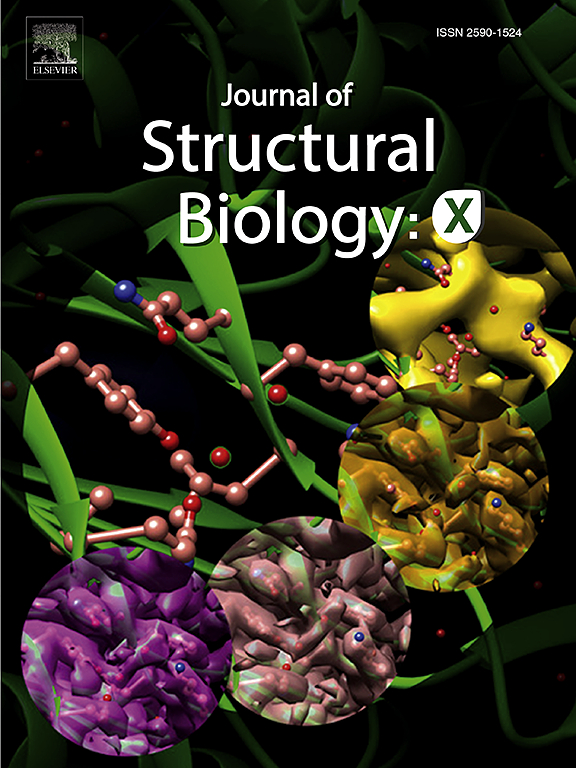2.0 Å AtFKBP53 55 kDa核纤溶蛋白结构域的冷冻电镜结构
IF 2.7
3区 生物学
Q3 BIOCHEMISTRY & MOLECULAR BIOLOGY
引用次数: 0
摘要
了解生物大分子的三维结构对于理解疾病病理的分子机制和设计针对特定分子的药物至关重要。单颗粒低温电子显微镜(Cryo-EM)已成为实现这一目的不可或缺的工具,尤其是在研究大型大分子及其复合物时。然而,它在实现较小大分子的近原子分辨率方面效果有限。本研究展示了标称分辨率为 2.0 Å 的 55 kDa 五聚体 AtFKBP53 核蛋白酶结构域的冷冻电镜结构。我们的方法包括选择最佳网格进行数据采集和精确排列小颗粒,以提高最终三维重建图的分辨率。在这项研究中,我们系统地处理了一个小分子的冷冻电镜数据集以改善配准,这种数据处理策略可用于指导其他小分子的冷冻电镜数据处理。本文章由计算机程序翻译,如有差异,请以英文原文为准。

2.0 Å cryo-EM structure of the 55 kDa nucleoplasmin domain of AtFKBP53
The knowledge of three-dimensional structures of biological macromolecules is crucial for understanding the molecular mechanisms underlying disease pathology and for devising drugs targeting specific molecules. Single particle cryo-electron microscopy (Cryo-EM) has become indispensable for this purpose, particularly for large macromolecules and their complexes. However, its effectiveness has been limited in achieving near-atomic resolution for smaller macromolecules. This study presents the Cryo-EM structure of a 55 kDa pentameric AtFKBP53 nucleoplasmin domain at 2.0 Å nominal resolution. Our approach involves selecting the optimal grid for data collection and precise alignment of small particles to enhance the resolution of the final 3D reconstructed map. In this study, we systematically processed cryo-EM dataset of a small molecule to improve alignment, and this data processing strategy can be used as a guidance to process the cryo-EM data of other small molecules.
求助全文
通过发布文献求助,成功后即可免费获取论文全文。
去求助
来源期刊

Journal of structural biology
生物-生化与分子生物学
CiteScore
6.30
自引率
3.30%
发文量
88
审稿时长
65 days
期刊介绍:
Journal of Structural Biology (JSB) has an open access mirror journal, the Journal of Structural Biology: X (JSBX), sharing the same aims and scope, editorial team, submission system and rigorous peer review. Since both journals share the same editorial system, you may submit your manuscript via either journal homepage. You will be prompted during submission (and revision) to choose in which to publish your article. The editors and reviewers are not aware of the choice you made until the article has been published online. JSB and JSBX publish papers dealing with the structural analysis of living material at every level of organization by all methods that lead to an understanding of biological function in terms of molecular and supermolecular structure.
Techniques covered include:
• Light microscopy including confocal microscopy
• All types of electron microscopy
• X-ray diffraction
• Nuclear magnetic resonance
• Scanning force microscopy, scanning probe microscopy, and tunneling microscopy
• Digital image processing
• Computational insights into structure
 求助内容:
求助内容: 应助结果提醒方式:
应助结果提醒方式:


